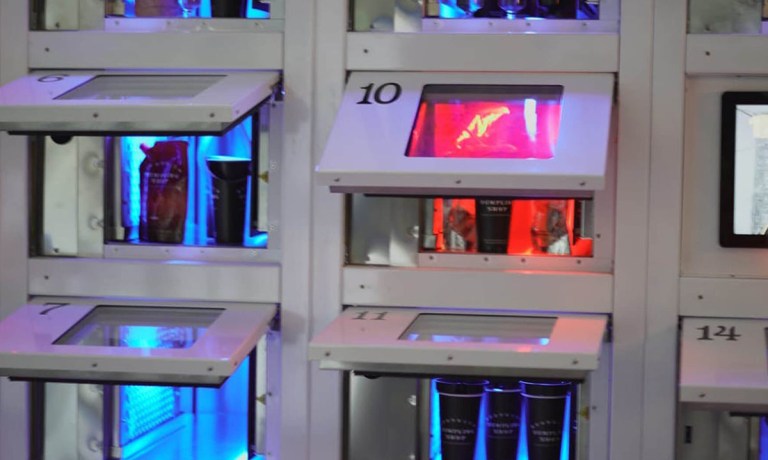The Automat Is Back, Thanks to the Rise of Self-Service (Again)

Self-service technology is bringing us full-circle — the automat seems to be making a comeback around the world.
The automat, which readers may know only from its appearance in mid-century period series such as “The Marvelous Mrs. Maisel” and “Mad Men,” offered a speedy, convenient restaurant experience before the explosion of fast-food chains.
Consumers arrived at a room full of self-service food compartments (filled by kitchen workers behind the scenes), dropped their coins into the slots, and picked up their food. Up until that point, people were served by wait staff, whether at a five-star restaurant or the local corner diner, and the self-service model was a novelty.
The model fell out of favor throughout the latter part of the twentieth century. Now, as retailers increasingly tap self-service models to lower labor costs and boost efficiency, it seems that the automat is returning.
Take, for instance, convenience retail giant 7-Eleven. Across Asia, the chain has been opening vending machine concepts, according to Mothership, including, most recently, a new location in Singapore, where consumers can procure sandwiches, salads and other fresh foods, in addition to the typical snacks and beverages, from these machines.
Meanwhile, in the U.S., automat restaurant concepts are beginning to emerge, to varying degrees of success. For instance, dumpling chain Brooklyn Dumpling Shop, which uses an automat format, is expanding across the country.
“It’s a self-ordering process, from the kiosk to the smartphone,” Stratis Morfogen, owner and CEO of Brooklyn Dumpling Shop, told PYMNTS in an interview over the summer, noting that, while right now the company offers ordering from both, he expects that as consumers become more comfortable with the technology, kiosks will “fall out of favor,” and smartphones will be the most popular ordering channel.
Certainly, consumers seem open to self-service options. According to findings highlighted in the latest Digital Payments Tracker® Series report by PYMNTS Intelligence titled “Unattended: The Payments Technology Shifting the Future of Commerce,” 84% of U.S. consumers have embraced self-service kiosks, with 66% even expressing a preference for them over staffed checkouts. Plus, 36% of consumers specifically seek smarter unattended payment alternatives.
Plus, research from PYMNTS’ study “Big Retail’s Innovation Mandate: Convenience And Personalization,” created in collaboration with ACI Worldwide, which drew from a survey of 300 major retailers in the U.S. and the U.K., found that the majority of merchants believe self-service capabilities are key to consumers’ loyalty. In fact, 60% of participating U.S. retailers reported that they think consumers would be very or extremely likely to switch merchants if not provided with self-service kiosks.
“It’s clear that consumer behavior is driving growth in innovative unattended payment options,” Ellie Smith, global head of digital acceptance at Discover Global Network, commented in the report. “These solutions have become more prevalent at consumers’ go-to locations, as convenient self-serve purchasing is becoming table stakes.”
Yet automats are certainly not a surefire hit — perhaps there was a reason their popularity dwindled. Jersey City’s Automat Kitchen, which arrived in 2021, shuttered roughly a year later.
In San Francisco, Eater reported Tuesday (Jan. 30), a full-service brunch restaurant is opening where an automat concept lived for just under two years.
America’s first and most prominent automat chain, Horn & Hardart, boomed in the ’50s and ’60s, with the last location closing its doors in 1991. Now, the brand operates as a direct to consumer (D2C) coffee seller.
The challenges of the model may come from consumers’ ongoing expectations of personal service. A PYMNTS Intelligence survey of nearly 2,500 U.S. consumers revealed that more than three-quarters (77%) of restaurant consumers say staff friendliness is the most important feature a restaurant needs to provide, and 39% said that restaurants are becoming less and less personal.
In the resurgence of automat concepts and self-service models, the growing acceptance among consumers is evident. However, the challenges of balancing convenience with the desire for personal service underscore the delicate balance that businesses in this space must navigate to ensure sustained success in the evolving landscape of retail and dining experiences.